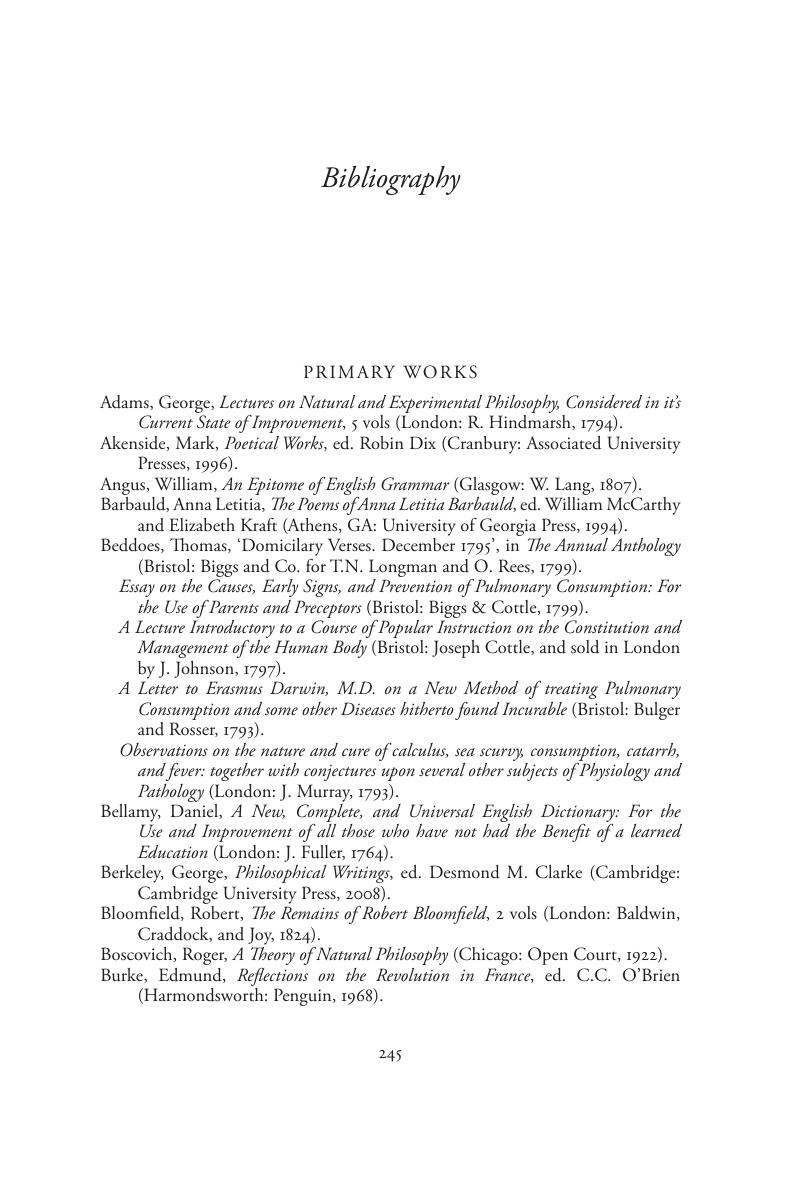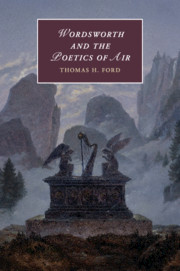Book contents
- Wordsworth and the Poetics of Air
- Cambridge Studies in Romanticism
- Wordsworth and the Poetics of Air
- Copyright page
- Contents
- Figures
- Acknowledgements
- Abbreviations
- Introduction
- Chapter 1 Atmospheric Romanticism
- Chapter 2 Atmospheric Mediation
- Chapter 3 Romantic Meteorology
- Chapter 4 Atmospheric Aesthetics
- Chapter 5 In the Breathing Chamber
- Conclusion
- Notes
- Bibliography
- Index
- Cambridge Studies in Romanticism
- References
Bibliography
Published online by Cambridge University Press: 27 June 2018
- Wordsworth and the Poetics of Air
- Cambridge Studies in Romanticism
- Wordsworth and the Poetics of Air
- Copyright page
- Contents
- Figures
- Acknowledgements
- Abbreviations
- Introduction
- Chapter 1 Atmospheric Romanticism
- Chapter 2 Atmospheric Mediation
- Chapter 3 Romantic Meteorology
- Chapter 4 Atmospheric Aesthetics
- Chapter 5 In the Breathing Chamber
- Conclusion
- Notes
- Bibliography
- Index
- Cambridge Studies in Romanticism
- References
Summary

- Type
- Chapter
- Information
- Wordsworth and the Poetics of Air , pp. 245 - 262Publisher: Cambridge University PressPrint publication year: 2018



